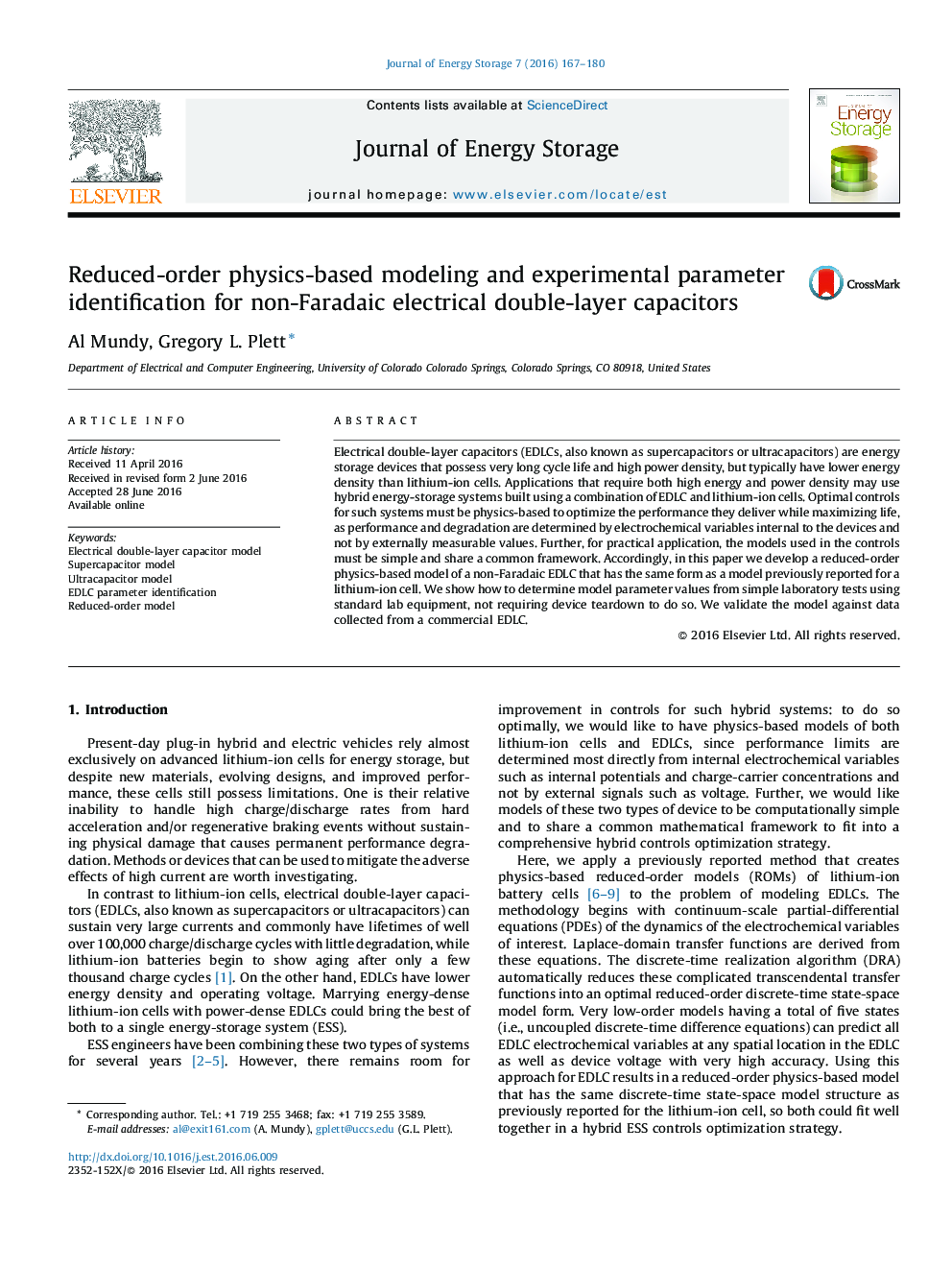| Article ID | Journal | Published Year | Pages | File Type |
|---|---|---|---|---|
| 1133074 | Journal of Energy Storage | 2016 | 14 Pages |
•Physics-based EDLC models are needed for controls that maximize performance and life.•We show how to derive physics-based impedance models of EDLC internal variables.•A subspace method produces reduced-order models suitable for control optimization.•We show how to identify model parameter values from simple laboratory experiments.•Results show excellent agreement between model predictions and measured data.
Electrical double-layer capacitors (EDLCs, also known as supercapacitors or ultracapacitors) are energy storage devices that possess very long cycle life and high power density, but typically have lower energy density than lithium-ion cells. Applications that require both high energy and power density may use hybrid energy-storage systems built using a combination of EDLC and lithium-ion cells. Optimal controls for such systems must be physics-based to optimize the performance they deliver while maximizing life, as performance and degradation are determined by electrochemical variables internal to the devices and not by externally measurable values. Further, for practical application, the models used in the controls must be simple and share a common framework. Accordingly, in this paper we develop a reduced-order physics-based model of a non-Faradaic EDLC that has the same form as a model previously reported for a lithium-ion cell. We show how to determine model parameter values from simple laboratory tests using standard lab equipment, not requiring device teardown to do so. We validate the model against data collected from a commercial EDLC.
